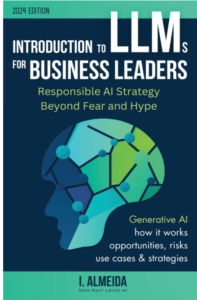10 Essential Statistical Concepts
10 Essential Statistical Concepts, data is the new oil — fueling innovations, shaping decisions, and transforming industries.
Whether you’re a budding data scientist, a business leader, or just a curious mind, understanding the core principles of statistics is your gateway to harnessing the full potential of data.
But with so many technical terms and complex concepts, where do you start?
10 Essential Statistical Concepts
Fear not! We’ve distilled the essentials into 10 must-know statistical concepts that will elevate your data literacy, supercharge your analytical skills, and give you a competitive edge in 2025.
1. Probability Distribution: The Blueprint of Uncertainty
Imagine predicting the weather or estimating stock prices — how do statisticians do this?
The answer lies in probability distributions. These mathematical functions describe how likely different outcomes are in a random experiment.
Why it matters: Probability distributions help model real-world phenomena — from modeling the heights of people to assessing risks in healthcare.
They enable us to make informed predictions and decisions under uncertainty.
2. Hypothesis Testing: Your Scientific Compass
Ever wondered if a new marketing strategy truly boosts sales? Hypothesis testing is the scientific method of statistics.
It allows you to test assumptions and validate claims—like whether a new drug is more effective than the existing one.
Why it matters: It’s the backbone of evidence-based decisions in research, quality control, and product development. Say goodbye to guesswork!
3. P-value: The Gatekeeper of Significance
In hypothesis testing, the P-value tells you whether your findings are statistically significant.
A P-value below 0.05 typically means your result is unlikely due to chance — and you can confidently reject the null hypothesis.
Why it matters: It provides a clear threshold for making scientific conclusions, ensuring your insights are robust and reliable.
4. Confidence Interval: Your Range of Certainty
Want to estimate an average with an understanding of uncertainty?
Confidence intervals give you a range — for example, “We’re 95% confident the true average income lies between $48,700 and $52,300.”
Why it matters: They quantify uncertainty, helping decision-makers understand the reliability of their estimates.
5. Correlation vs. Causation: Avoid the Common Pitfall
Just because two variables move together doesn’t mean one causes the other.
For example, ice cream sales and heatstroke incidents both rise in summer, but one doesn’t cause the other.
Why it matters: Recognizing the difference prevents false assumptions and misleading conclusions — a crucial skill in data analysis.
6. Sampling Bias: The Hidden Trap
Collecting data from a biased sample can distort results.
Imagine training a credit scoring model only on data from high-income individuals — it’s biased and unfair to low-income groups.
Why it matters: Ensuring representative samples is vital for fair, accurate insights and ethical decision-making.
7. Descriptive Statistics: Your Data’s Summary
Think of this as taking a quick snapshot of your data. Measures like mean, median, standard deviation, and skewness help you understand the main features of any dataset.
Why it matters: Descriptive stats are the foundation for further analysis — whether comparing prices or evaluating sports performance.
8. Inferential Statistics: Making Predictions About the Whole
Using a sample, you can make educated guesses about an entire population.
Techniques like t-tests, chi-squared tests, and ANOVA help you infer broader trends.
Why it matters: It’s essential for scientific research, quality control, and market analysis — turning small data into big insights.
9. Central Limit Theorem: The Magic of Averages
Ever wondered why many datasets look bell-shaped?
The Central Limit Theorem explains that the average of many independent samples tends to follow a normal distribution, even if the data itself isn’t normal.
Why it matters: It justifies using many statistical methods that assume normality, simplifying complex analyses.
10. Bayesian Inference: The Future of Probabilistic Thinking
Going beyond traditional statistics, Bayesian inference incorporates prior knowledge and updates beliefs as new data arrives.
It’s the secret behind personalized recommendations, medical diagnoses, and spam filters.
Why it matters: It offers a flexible, intuitive approach to decision-making under uncertainty — a game-changer for AI and machine learning.
Ready to Dive Into Data?
Mastering these 10 concepts will elevate your data game, whether you’re analyzing trends, making predictions, or developing AI models.
In a world driven by data, understanding these principles isn’t just an advantage — it’s a necessity.
Stay ahead of the curve in 2025 — embrace the power of statistics!
The Story of P-Hacking » FINNSTATS





